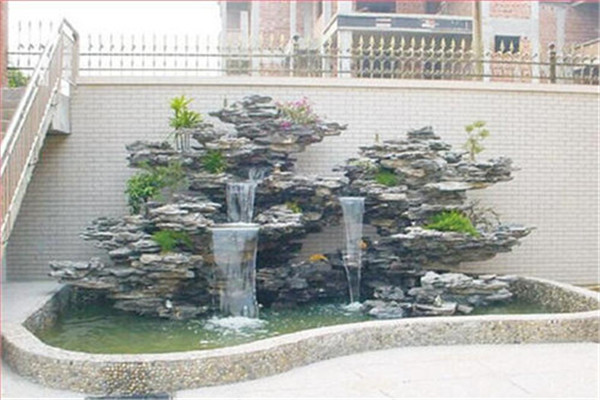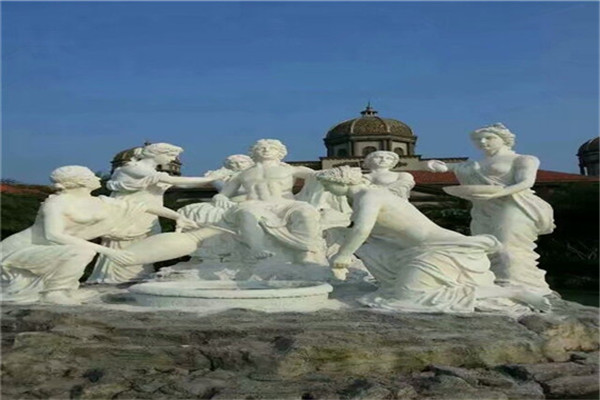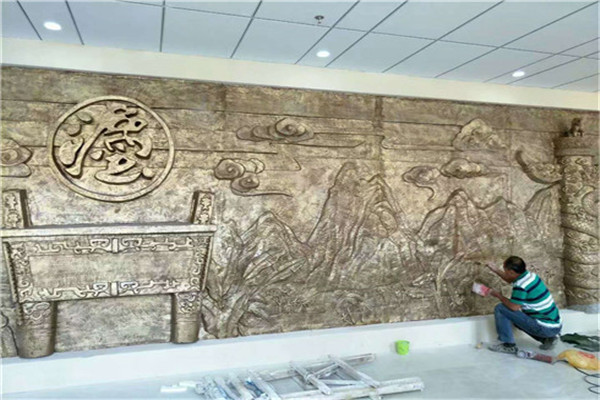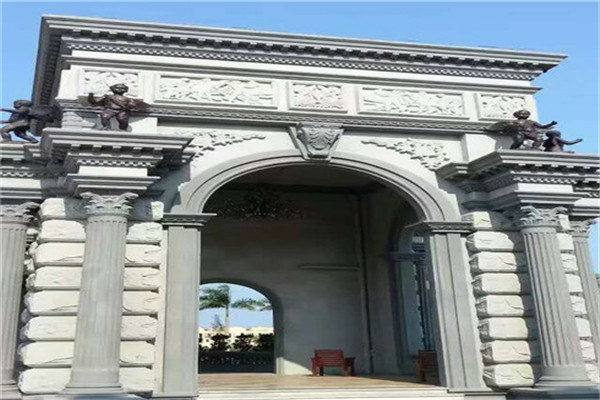
The types of stone inscription monuments include monuments, memorial monuments, merit monuments, temple monuments, Dianzi monuments, mausoleum monuments, etc. Except for a few wordless steles, they are generally literal steles. Usually, characters are carved on the body of the stele, and some are accompanied by carved patterns. The pedestal and cover of the stele are mostly carved with decorations, birds, animals, flowers, and mascots. The cover of the stele of the imperial family is also carved with dragons and phoenixes. Marble is the most commonly used stone for making the stele, and sandstone and granite are also commonly used. Some of the steles are huge, and some of them become a group of steles. Stone books are written with stone instead of paper, and carved instead of pen, which is very ingenious. There are many famous works of stone tablet processing and stone calligraphy carving. For example, "Xi'an Forest of Steles" includes more than 3000 historical steles from Han Dynasty to Qing Dynasty. It is the largest collection of stone books in China. Together with the "Forest of Steles in Hanlin" under construction in Kaifeng, it can be said that it is a sea of steles, and it is a collection of calligraphies of regular script, line, grass, seal script, clerical script and Wei style by famous calligraphers of all ages. In addition to large-scale carvings such as stele books and cliff carvings, there are also some stone carvings, such as mourning volumes in imperial tombs and modern fine carved small stone books, such as more than 100 mourning volumes of white marble excavated in the tomb of the prince of the Tang Dynasty, and six stone books of "Thirty six Strategies" carved in tile slate in modern Chengdu, a total of 26 pages and 1278 words, bound into a volume with eyeliner, each page is 2.2.6mm, which can be read.

Button carving refers to the carving of the buttons on the upper part of the seal. It belongs to the category of round carving and has a rich three-dimensional sense. However, compared with round carving, it has three significant characteristics. First, the image is small, limited to the size of the seal, which is generally less than 10 cubic centimeters; The second is to show only the upper part of the object, rather than the round sculpture, which needs all-round performance; In addition, the performance content of button carving is mostly animals, especially animals in ancient legends, such as chi, lion, dragon, tiger, exorcism, taotie, etc. Therefore, button carving is also called "animal button". The history of button carving is linked with seals. Only seals can make buttons. According to relevant historical research, the earliest seal started in the Zhou Dynasty, more than 3000 years ago. The original seal is a symbol of power and status, and is a special item for princes, generals and ministers, and Dada dignitaries. The original seal button was also very simple and simple, just drilling a small hole on the top of the seal to wear strong ties for carrying, so the seal button is also called "seal nose". With the continuous development of history, a strict hierarchy has emerged in the materials and buttons of seals according to the different positions and official titles of users. For example, the official seal of the Qin Dynasty, in addition to using gold, silver, copper and other materials to distinguish the level of the official seal, also distinguishes the decoration of the button. In the Han Dynasty, the emperor used tiger buttons with jade seals, the crown prince, the lieutenants, the prime minister, the lieutenant, the sangong, and the left and right generals used gold seal tortoise buttons, and the officials of the two thousand stone Dai Lu used bronze seal elephant buttons Since then, the buttons used by all dynasties, from the monarch down to the officials of various products, were mostly chi, lion, dragon, phoenix, tiger, exorcism, taotie, unicorn, camel, bird, claw, bear, bat and other animals in the zodiac, depending on their positions.

Circular sculpture, also known as three-dimensional sculpture, refers to non compressed three-dimensional sculpture that can be viewed from multiple directions and angles. Sculpture is the overall expression of art on the sculpture. The viewer can see all sides of the object from different angles. It requires the sculptor to carve from the front, back, left, right, top, middle and bottom. The techniques and forms of round sculpture are also varied, including realistic and decorative, concrete and abstract, indoor and outdoor, shelf and large city sculpture, colored and non colored, etc; The contents and themes of the sculptures are also rich and colorful, which can be characters, animals or even still life; The materials are more colorful, including stone, wood, metal, clay, gypsum, textiles, paper, plants, rubber, etc. It is mostly used in fountains, gardens and indoors. Because the round sculpture works are very three-dimensional, vivid, lifelike and vivid, the selection of stone materials is strict. First of all, we should design the shape of the sculpture, and pay special attention to the fact that the sculpture must have a proper proportion with the real object from length to width to thickness.

Artificial landscape rockery is a kind of mountain built with soil, stone and other materials for the purpose of landscaping in gardens. Tianjin EPS decorative materials The rockery has various landscaping functions, such as forming the main landscape or terrain skeleton of the garden, dividing and organizing the garden space, arranging the courtyard, revetment, slope protection, retaining soil, and setting natural flower beds. It can also be combined with garden buildings, garden roads, sites and garden plants to form a scene full of changes, so as to reduce the artificial atmosphere, add natural interest, and integrate garden buildings into the landscape environment. Therefore, rockery has become one of the characteristics of Chinese natural landscape garden. The natural landscape is the artistic source and basis of rockery creation. Although the real mountain is good, it is rare to visit it often. EPS decorative materials Price The front rockery is arranged near the house. As a work of art, it is more general and refined than the real mountain. It can embody people's thoughts and feelings, and make it have the charm of "mountains are beautiful, rocks are beautiful". Artificial rockery must also try not to reveal artificial traces, making it difficult to distinguish the true from the false. The rockery, which comes down in one continuous line with the traditional Chinese landscape painting, is important because it seems true but not true. Although it is false, it is still true, which is thought-provoking.

Components are reusable software modules oriented to software architecture. It is a reusable software component that can be used to construct other software. It can be encapsulated object classes, class trees, some functional modules, software frameworks, software architecture (or architecture), documents, analysis pieces, design patterns, etc. In 1995, Ian Graham gave the definition of component as follows: component refers to an object (interface specification, or binary code), which is used for reuse, and the interface is clearly defined. Hainan sculpture component appears as a logic tight program code package with a good interface. For example, Ada's Package, Smalltalk-80 and C++'s class and data type can all belong to the component category. However, the operation set, procedure and function can not become a component even if they can be reused. Developers can develop new application systems by assembling existing components, so as to achieve the purpose of software reuse. Software component technology is the key factor of software reuse, and also the focus of software reuse technology research.

Marble, granite, Hui'an stone, Qingtian stone, Shoushan stone, Guicui stone and other materials are generally used for stone carving. Granite and marble are suitable for carving large statues; Qingtian stone and Shoushan stone are rich in color, which are more suitable for small stone carvings. There are many ways to make stone carvings. According to the nature of stone materials and the habits of the carvers, stone carvings can be roughly divided into two types: first, traditional methods. Conception, composition, modeling and stone carving are all done by individuals alone. For large-scale carving of lines, the horizontal and vertical lines shall be drawn on the stone, the grid shall be made to take materials, and the simple measurement and positioning method shall be used for carving. The second is to adopt a new process, that is, first make a clay sculpture, turn it into a plaster statue, then take the plaster statue (model) as the basis, rely on the point shaped instrument, and then carve it into a stone statue.






